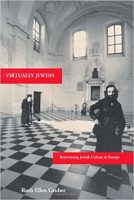
– Written and narrated by Peter Bejger.
Let’s take a moment to consider “dark tourism.”
The concept is elastic, and quite multi-faceted. And it has a distinguished historic pedigree. Evidently there are assertions that Thomas Cook, yes the Thomas Cook that founded the famous international travel agency, took people to see public hangings in England with some of his very first tour groups in the 19th century.
And there is even an academic Institute for Dark Tourism in England that promotes ethical research. Research into a social scientific understanding of sites of death and disaster. And how these sites have, or can, become tourist sites, whether appropriate or inappropriate.
The world offers so many options for dark tourism: the horrifying, like now visitor-thronged concentration camps; the easily accessible, like Ground Zero at the 9/11 memorials in Lower Manhattan; the far-flung and harder to reach, like the haunting ruins of lovely ancient Armenian churches in the isolated reaches of what is now northeastern Turkey. Reflecting on those ruins brings up uncomfortable questions on what happened to those people who once worshipped in those churches.
There is also the edgy. People are usually impressed when you’ve told them you were able to tour the radioactive zone around Chornobyl.
Which brings us to the endless supply of dark tourist sites in Eastern Europe, and specifically Ukraine.
The first edition of Ruth Ellen Gruber’s book Jewish Heritage Travel: A Guide to Eastern Europe was published twenty-five years ago. This was the first, and is still considered the most complete, Jewish travel guide to the region.
 Gruber has tracked Jewish cultural developments in Europe for three decades and writes often on Jewish heritage, revival, and tourism in post-communist Europe. In her 2012 book Virtually Jewish: Reinventing Jewish Culture in Europe, she used the term “virtually Jewish” to describe the way so-called “Jewish space” in Europe is often filled by non-Jews.
Gruber has tracked Jewish cultural developments in Europe for three decades and writes often on Jewish heritage, revival, and tourism in post-communist Europe. In her 2012 book Virtually Jewish: Reinventing Jewish Culture in Europe, she used the term “virtually Jewish” to describe the way so-called “Jewish space” in Europe is often filled by non-Jews.
When Gruber began her work back in 1989, almost any visit to a Jewish heritage site could be considered a form of “Dark Tourism.” But she has been carefully noting the evolution of this tourism and what is happening today.
Gruber believes there have been dramatic changes. There are still many neglected ruins. Many sites and experiences remain deeply troubling, and tragic. But so much more new information is now available. Scholars, governments, tour guides, and cultural and heritage entrepreneurs have opened up tremendous new travel opportunities.
Gruber has been traveling and lecturing in Ukraine, most recently at the Center for Urban History of East Central Europe in Lviv. She spoke on the changes in Jewish heritage travel over the last twenty-five years.
Gruber also visited Jewish heritage sites in more than ten towns near Lviv to observe conditions and note changes. She coordinates the website www.jewish-heritage-europe.eu that recently reported new developments in the town of Brody.
In 1939 Jews made up around ten thousand of the eighteen thousand people who lived there. Fewer than one hundred are believed to have survived the Holocaust.
The historic Fortress Synagogue in the town, built in the 1740s, was heavily damaged in the Second World War. The ruins have towered over the market square in the center of town for decades.
Recently, new signage in Ukrainian and English has been installed at the site to describe the building and explain the important Jewish history of the town. A tourist brochure on Jewish Brody has also been published and can be downloaded. This is all part of a now larger effort to highlight the town’s multicultural history, a history previously ignored.
These initiatives are part of a project carried out by the NGO “Kraj” (“Land”). They are within the framework of “CHOICE” – Cultural Heritage: Opportunity for Improving Civic Engagement.“ This is a broader project funded by the European Union and the Association of Local Democracy Agencies of France.
But Gruber sees long-term preservation of the ruins as an issue that will have to be eventually considered.
Ruth Ellen Gruber’s long-term monitoring of Jewish heritage travel in Eastern Europe reveals the complex and often still unresolved issues surrounding memory, and appropriate commemoration. And she reminds us that increasingly mainstream travel itineraries will bring visitors to reflect on, as she writes, “the Dark with the Destination.”
This has been Ukrainian Jewish Heritage on Nash Holos Ukrainian Roots Radio. From San Francisco, I’m Peter Bejger. Until next time, shalom!

